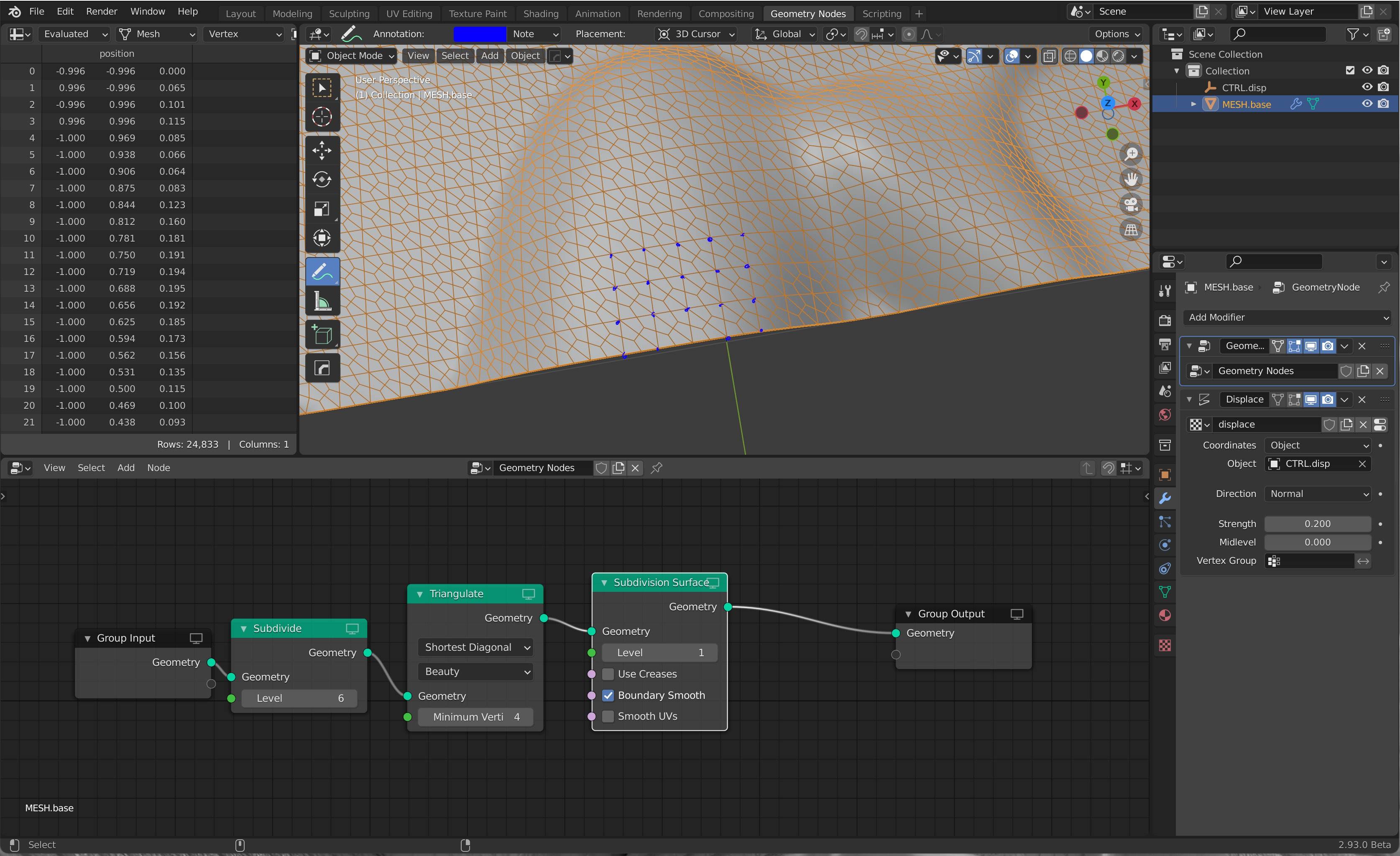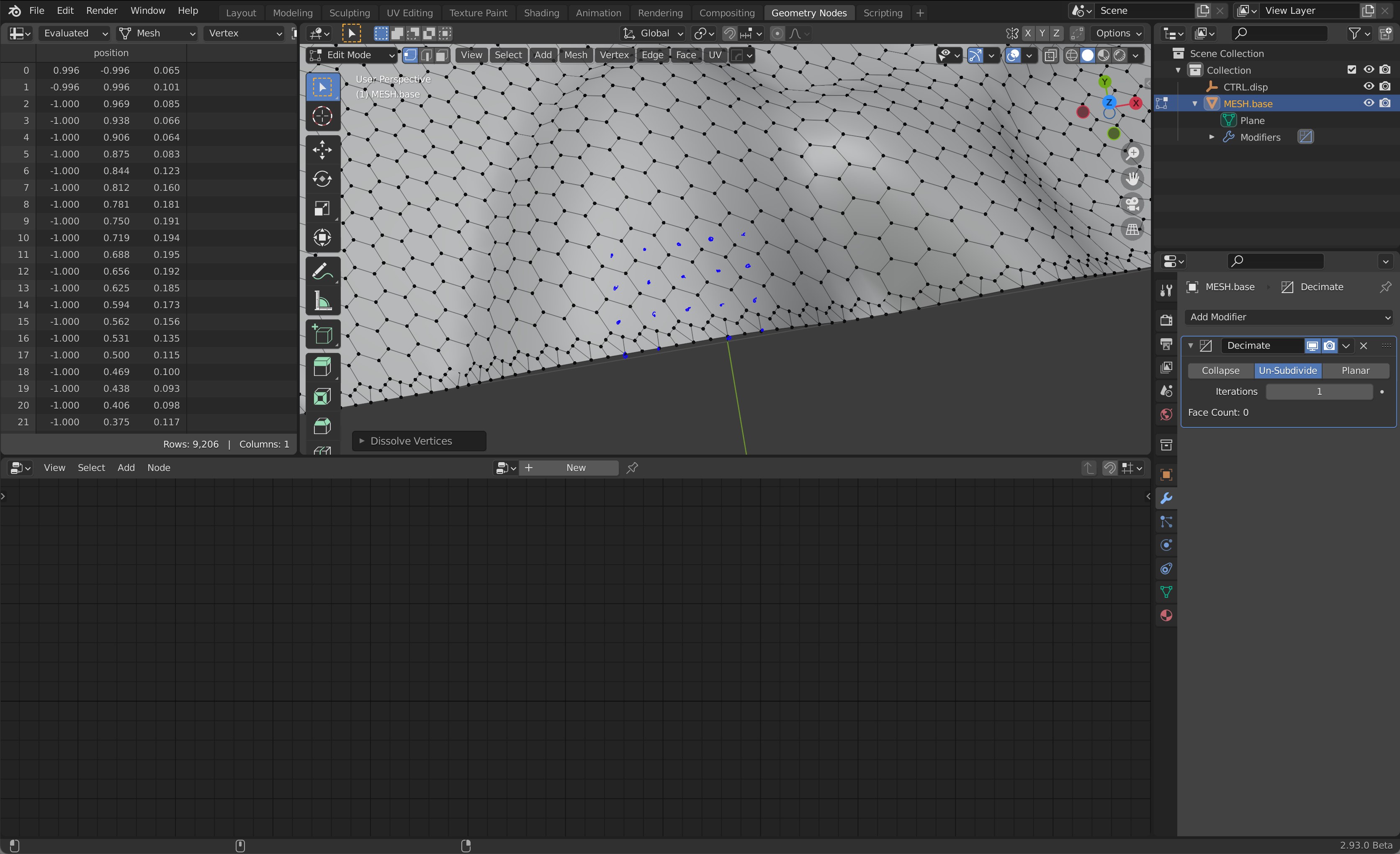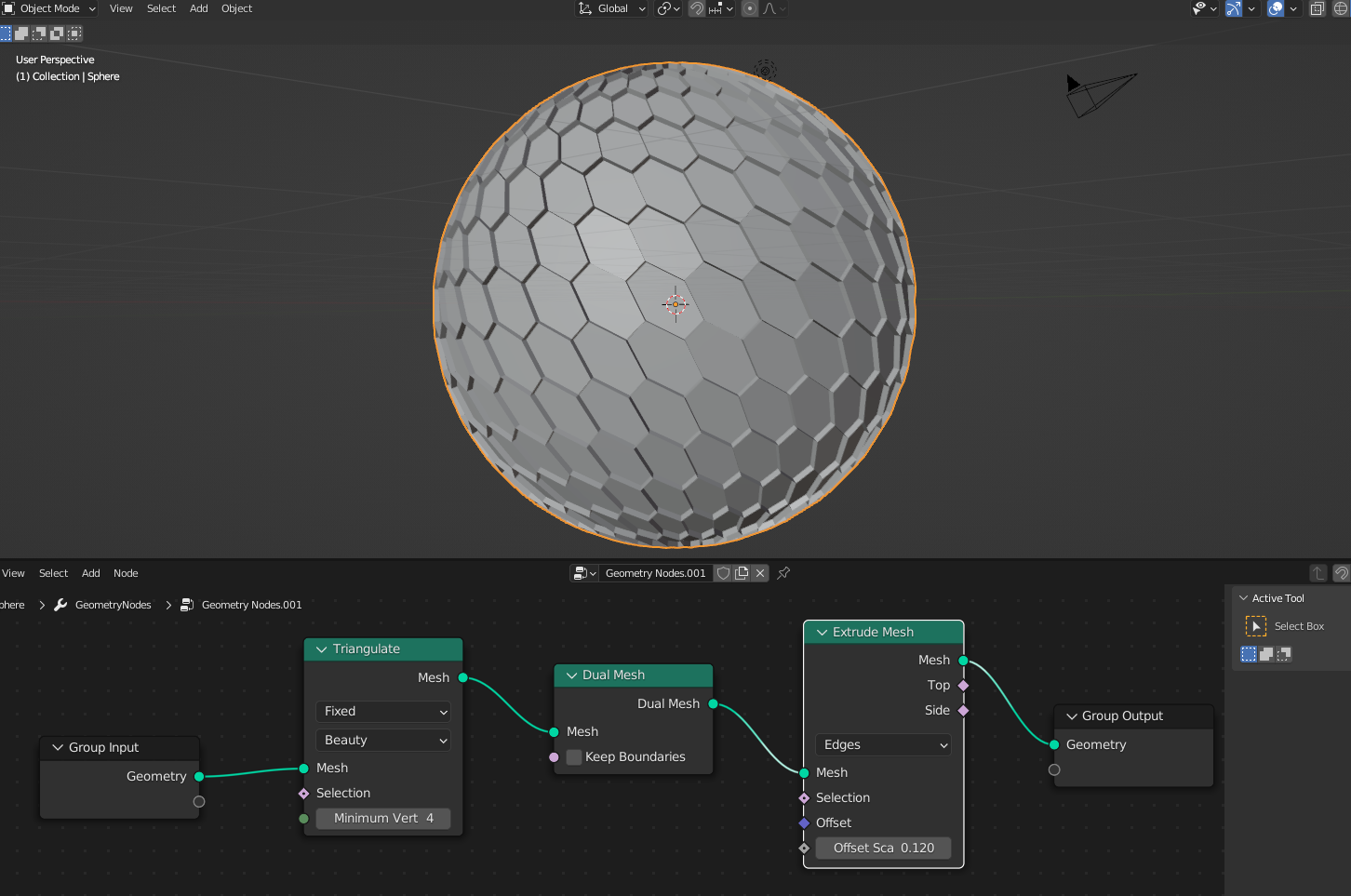I'm trying to create a dual mesh, as described by Alessandro Zomparelly, but procedurally using Geometry Nodes. I've only come this far, but now I need to dissolve the vertices of the original mesh, before triangulation and subdivision:
I'm not sure it's even possible with Geometry Nodes, but it should eventually end up like this:
Then, of course, the edges need to be cleaned up, so that's another challenge.
Is there a way to achieve this in Blender? I'm using the latest 2.93 Beta.



